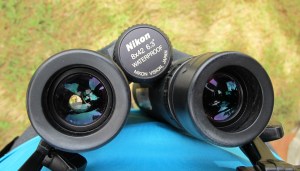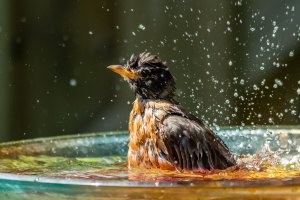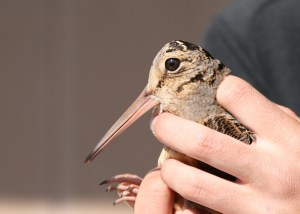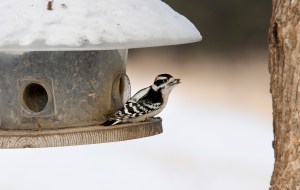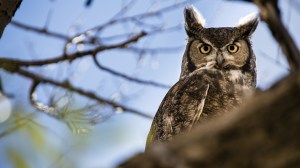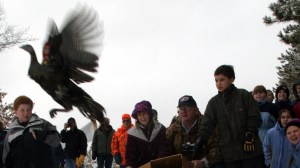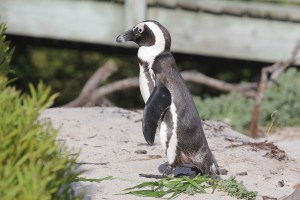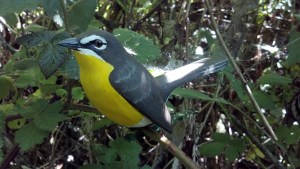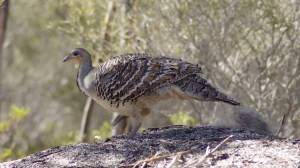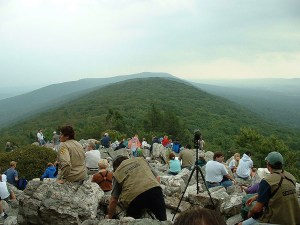Discover stories in Birds
Ready, Set, Bird: 6 Spring Migration Hotspots
Spring migration is underway, so dust off your binoculars and check out our picks for great spring birding hotspots.
Splish, Splash: Why Do Birds Take Baths?
Like people, birds love a good bath. But why? Ornithologist Joe Smith dips into the research on bird bathing, and reveals the science—and the mystery—of this backyard phenomenon.
The American Woodcock: Tribute to a Wonderful Wetland Bird
It has 360-degree vision. It binges on worms. And its spring mating ritual includes some of the funkiest dance moves in the bird world. Meet the American woodcock, a.k.a. timberdoodle.
Winter Bird Feeding: Good or Bad for Birds?
Winter bird feeding is hugely popular, with more than 40 percent of U.S. households participating. But is it actually good for the birds? Ornithologist Joe Smith looks at the science behind this backyard activity.
The Hooting Season: Enjoying Great Horned Owls
Winter is the time to enjoy the great horned owl breeding season–a time when these charismatic birds are much easier to see and hear.
The Great Turkey Shuffle: How Restoration Has Changed Gobbler Genetics
When reintroducing wild turkeys across the United States, conservationists paid little attention to turkey subspecies. Today, determining turkey subspecies can require the skills of a wildlife CSI team. What does this mean for turkey genetics -- and future conservation?
The Penguins of Boulders Beach
Forty years ago, Boulder Beach in South Africa had no penguins. Today, tourists flock there to see thousands of these charismatic birds. A conservation success? Not quite. The real story is a bit more complicated.
Decoy: How Fake Birds Aid Real Research
To get a bird in the hand, you have to catch it first. One of the bird researcher's most trusted bird catching tools is the decoy — a fake bird. Ornithologist Joe Smith on why real birds so often fall for their wooden and paper mache likenesses.
You Won’t Forget the Mega-Footed Malleefowl
Ever heard of a malleefowl? You’ll never forget it after reading about their big feet, huge nests, and chicks born fully feathered that can fly within 24 hours.
Enjoy the Fall Migration: Your Guide to Bird Observatories
The fall bird migration is underway. And there's no better way to enjoy the spectacle -- and help science -- than to visit a bird observatory near you. Ornithologist Joe Smith gets you started.
A Renter’s Market: BirdReturns Offers Innovative Conservation
How can conservationists protect one million acres of migratory bird habitat in Central California, particularly when that property is highly valuable agricultural land? The solution: Pop-up wetlands.
CSI Channel Islands: Can the Island Scrub-jay Help to Think about Climate Change?
Solving the mystery of Santa Rosa's island scrub-jays could refine thinking on how to manage vulnerable species under climate change.
